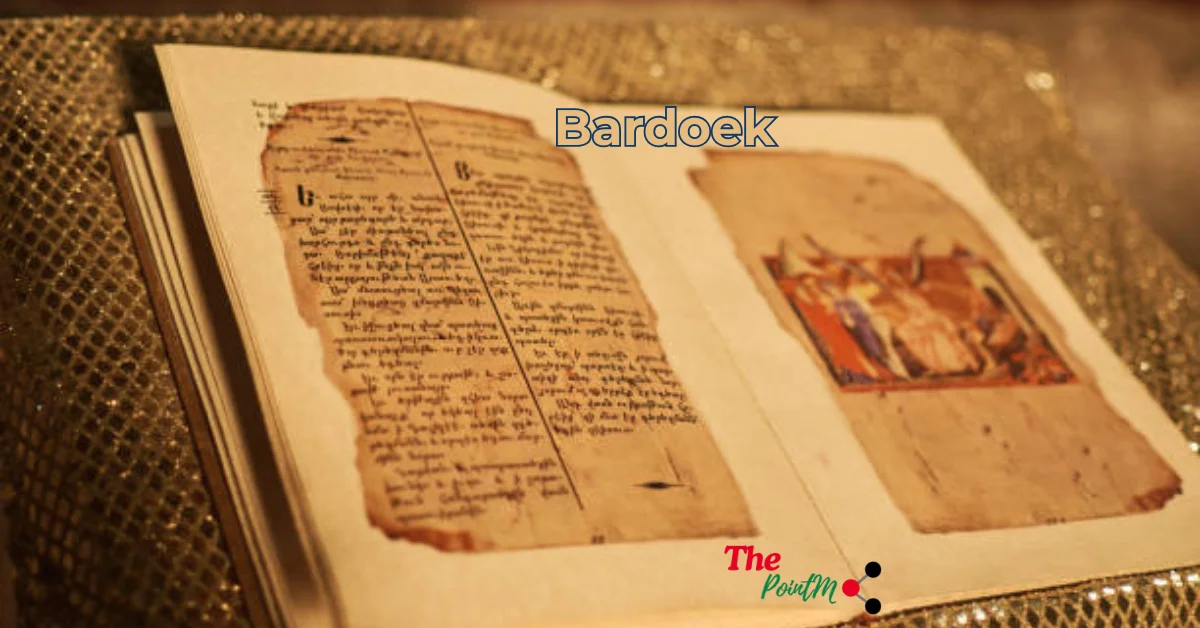Introduction to the Bardoek Chronicles
The Bardoek Chronicles are more than just stories; they are a vibrant tapestry woven from the threads of history, culture, and creativity. This unique narrative tradition has captivated minds for generations, inviting readers to explore a world where art and literature intertwine seamlessly. As we delve into the rich origins of Bardoek culture, you’ll discover its profound impact on artistic expression and storytelling. The legacy of these chronicles continues to shape contemporary society in fascinating ways. Join us as we embark on an enlightening journey through the enchanting realm of Bardoek!
The Origins of the Bardoek Culture
The origins of Bardoek culture are steeped in mystery and tradition. Emerging from a tapestry of ancient practices, it reflects the rich history of a people deeply connected to their land.
Archaeological findings suggest that the roots trace back thousands of years. Early settlers utilized local resources, creating tools and art that spoke to their environment. This connection fostered a unique identity.
Oral traditions played a crucial role in shaping Bardoek culture. Stories passed down through generations preserved values and beliefs, binding communities together.
Rituals surrounding seasonal changes illustrate an appreciation for nature’s cycles. These early customs laid the groundwork for what would evolve into a vibrant artistic expression.
From humble beginnings, Bardoek has blossomed into something remarkable—an enduring legacy etched in every piece of art or tale shared by its people.
The Impact of Bardoek Art and Literature
Bardoek art and literature have woven a rich tapestry of cultural heritage. This expression resonates deeply within communities, reflecting their values, struggles, and aspirations.
The vivid imagery found in Bardoek paintings captivates the eye while telling stories of resilience and hope. Each brushstroke carries significance, often portraying scenes from folklore that resonate with both young and old.
Meanwhile, Bardoek literature serves as a powerful vehicle for storytelling. Poets and authors capture the essence of life through words that echo across generations. These narratives foster connections among people who share similar experiences or challenges.
Moreover, the themes explored in these works not only entertain but also provoke thought about identity and belonging. The fusion of traditional elements with modern influences allows Bardoek artists to remain relevant while honoring their roots.
The Importance of Storytelling in Bardoek Culture
Storytelling sits at the heart of Bardoek culture. It weaves connections, binding generations through shared narratives and experiences. Each tale is a thread in the fabric of identity.
In traditional gatherings, elders recount stories passed down since time immemorial. These tales often reflect moral lessons or celebrate historical events, reinforcing community values.
Children listen with wide eyes, absorbing wisdom that shapes their understanding of life and belonging. The art of storytelling fosters imagination and creativity among listeners.
Moreover, these oral traditions adapt over time while retaining core themes. Contemporary storytellers blend old motifs with modern contexts to engage new audiences.
Through festivals and gatherings, Bardoek storytelling continues to thrive. It’s more than mere entertainment; it’s a means of preserving history and culture for future generations to cherish and explore further.
Contemporary Adaptations of the Bardoek Chronicles
Contemporary adaptations of the Bardoek Chronicles breathe new life into this rich cultural tapestry. Artists, writers, and filmmakers are exploring innovative ways to reinterpret these ancient stories.
Graphic novels have emerged as a popular medium. They capture the vibrant visuals and complex narratives of Bardoek culture with striking illustrations that resonate with younger audiences.
Meanwhile, theater productions are bringing the tales to life on stage. With immersive settings and dynamic performances, they invite viewers to experience the essence of Bardoek firsthand.
Digital platforms also play a crucial role in spreading awareness. Podcasts and online series delve deep into themes found within the Chronicles. This modern approach ensures that anyone can access Bardoek’s legacy from anywhere in the world.
As technology evolves, so does storytelling within this cultural heritage. The adaptability of these narratives showcases their timelessness while keeping them relevant for future generations.
The Legacy of the Bardoek Chronicles in Modern Society
The Bardoek Chronicles continue to resonate deeply within modern society. Their rich narratives inspire contemporary creators across various mediums, from literature to film and visual art. These stories challenge artists to explore the complexities of identity, culture, and human experience.
In educational settings, the Bardoek tradition serves as a vital tool for teaching cultural history and ethical values. Students engage with these tales to foster empathy and understanding among diverse communities.
Social media platforms have also witnessed a resurgence of interest in Bardoek themes. Memes, illustrations, and discussions bring age-old wisdom into today’s digital landscape.
Moreover, festivals celebrating Bardoek arts attract participants eager to connect with their heritage while welcoming newcomers keen on exploration. This dynamic interplay between past and present ensures that the essence of the Bardoek Chronicles endures as an influential force in shaping our modern storytelling landscape.
Preserving and Celebrating Bardoek Culture for Future Generations
Preserving the Bardoek culture is essential for future generations. It’s more than just maintaining traditions; it’s about keeping a vibrant identity alive.
Community events play a crucial role. Festivals showcasing music, dance, and food create opportunities for families to engage with their heritage. These gatherings foster connection and pride among participants.
Education initiatives can also make a difference. Schools incorporating Bardoek history into curricula help children understand their roots. Workshops on traditional crafts encourage hands-on learning experiences that resonate deeply.
Digital platforms offer new avenues for sharing stories and art forms unique to the Bardoek legacy. Online archives can document oral histories, ensuring they’re accessible to all.
By embracing modern tools while honoring tradition, the spirit of Bardoek will thrive in an ever-changing world. Engaging younger generations in this cultural journey ensures its vibrancy for many years to come.
Conclusion
The Bardoek Chronicles represent more than just a collection of stories; they embody the spirit and resilience of a rich culture. From their origins steeped in tradition to their evolution in contemporary art and literature, the Bardoek have left an indelible mark on society. Storytelling, as a cornerstone of this legacy, continues to inspire both creators and audiences alike.
As we explore these narratives today, it’s clear that the essence of Bardoek culture thrives through adaptation and innovation. The modern interpretations ensure that future generations can connect with their roots while forging new paths forward.
Preserving this unique heritage is essential for keeping its vibrant traditions alive. Efforts to celebrate Bardoek culture will foster appreciation among diverse communities worldwide. As we embrace these stories, we contribute to a living legacy that honors not only where we’ve come from but also shapes where we’re going.

